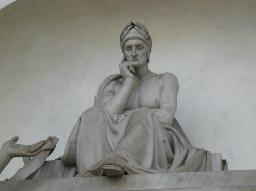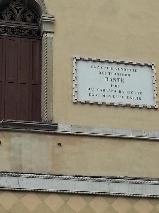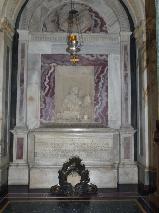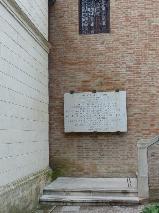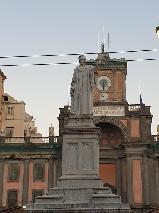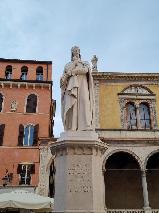Dante Alighieri |
| POET, WRITER (ITALY) |
|
BORN 9 Jul 1265, Firenze, Toscana - DIED 14 Sep 1321, Ravenna, Emilia-Romagna GRAVE LOCATION Ravenna, Emilia-Romagna: San Giovanni Evangelista |
|
Dante was born around 1265 in Florence. His family supported the Guelphs, an alliance that supported the papacy, where the Ghinellines were allied with the Holy Roman Emperor. His mother died when he was young and his father had two further children by Lapa di Chiarissimo Cialuffi. Dante stated that me first met Beatrice Portinari when he was nine years old and fell in love with her immediately. When he was twelve years old his family promised him to Gemma di Manetto Donati. He stated that he saw Beatrice again after he was eighteen years old and greeted her although they didn't know each other well. He also stated that he met her again after his marriage. He had three children with Gemma. On 11 June 1289 he fought at the Battle of Campaldino where th Guelphs were victorious. After that he joined the Physicians' and Apothecaries' Guild. He expressed his courtly love for Breatrice in his poems. Beatrice died in 1290. In 1294 he was among the escorts of Charles Martel of Anjou when he visited Florence. He formally became a pharmacist in order to pursue political activities. The Guelphs had split into two fractions, the Blacks who continued to support the Pope and the Whites who wanted more independence for Rome. Dante belonged to the The Whites, who expelled the Blacks. But in 1301 Chares of Valois entered Florence with the Black Guelphs. Dante, who had been in Rome as a delegate fro Florence, was exiled for two years and ordered t opay a fine. He didn't pay the fine and this resulted in permanent exile. Attempts by the White Guelphs to regain power failed and Dante lived in Verona, Sarzana and other places. Where and when he started to write his famous "Comedia" - later known as " Divina Comedia "is unknown. In it he described hell, purgatory and heaven. It was written in Tuscan dialect instread of Latin and its influence on the Italian language and on European culture was huge. In 1318 prince Guido II da Polenta invited Dante to stay in Ravenna. There he died in 1321 after he contracted malaria during a visit to thhe Republic of Venice. He was buried at the Church of San Pier Maggiore. Later Florence wanted his remains to be returned, but Ravenna refused. In 1781 the current neoclassical monument was contructed. During the French occupation of 1810 the friars hid the bones. In 1829 a tomb for Dante was built in the Santa Croce in Florence but it is still empty. His remains were rediscovered in 1865 in the wall of St. Francis' Monastery where they had been hidden. There were transferred to back to the monument where they still are. Related persons • was written about by Del Lungo, Isidoro • had work illustrated by Doré, Gustave • had work translated by Geiger, Benno • had work translated by George, Stefan • was admired by Janmot, Louis |

